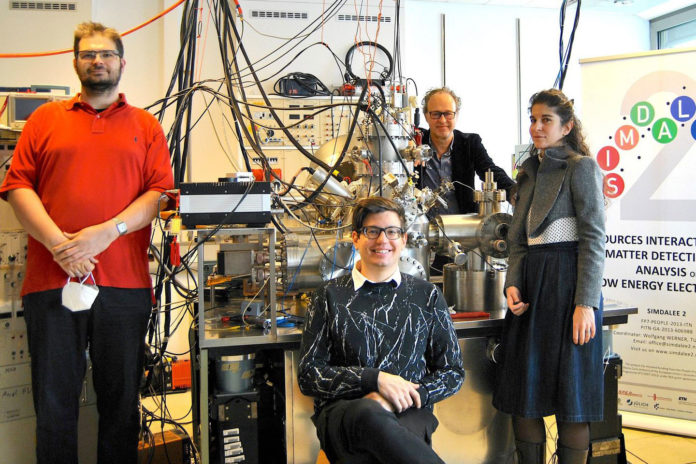Some materials emit electrons after irradiating with light. Such electrons are known as photoelectrons.
In materials research, so-called “Auger electrons” also play an essential role – atoms can emit them if an electron is first removed from one of the inner electron shells.
Now, scientists at TU Wien (Vienna) have reported a completely different type of electron emission. This new kind of electron emission can occur in carbon materials such as graphite. Despite the fact that it is known for about five decades, but its cause remains obscure.
Prof. Wolfgang Werner from the Institute of Applied Physics said, “Many researchers have already wondered about this. Some materials consist of atomic layers held together only by weak Van der Waals forces, for example, graphite. And it was discovered that this type of graphite emits particular electrons, which all have the same energy, namely 3.7 electron volts.”
“No known physical mechanism could explain this electron emission. But at least the measured energy indicated where to look: If these atomically thin layers lie on top of each other, a certain electron state can form in between. You can imagine it as an electron that is continuously reflected back and forth between the two layers until, at some point, it penetrates the layer and escapes to the outside.”
Dr. Alessandra Bellissimo, one of the authors of the current publication, said, “The energy of these states fits well with the observed data – so people assumed that there is some connection, but that alone was no explanation. The electrons in these states should not reach the detector. In the language of quantum physics, one would say: The transition probability is just too low.”
Wolfgang Werner said, “To change this, the internal symmetry of the electron states must be broken. You can imagine this like rope skipping. Two children hold a long rope and move the endpoints. Both create a wave that would normally propagate from one side of the rope to the other. But if the system is symmetrical and both children behave the same way, the rope moves up and down. The wave maximum always remains at the same place. We don’t see any wave movement to the left or right; this is called a standing wave.”
“But if the symmetry is broken because, for example, one of the children moves backward, the situation is different – then the dynamics of the rope changes and the maximum position of the oscillation moves.”
This kind of symmetry breaks can also take place in the material. Electrons leave their place and start moving, leaving a “hole” behind. Such electron-hole pairs disturb the symmetry of the material. In this manner, the electrons out of nowhere have the properties of two different states simultaneously.
Along these lines, two advantages can be combined: On the one hand, there are countless such electrons, and then again, their probability of reaching the detector is sufficiently high. In a perfectly symmetrical system, only one or the other would be conceivable. As indicated by quantum mechanics, they can do both simultaneously because the symmetry refraction makes the two states “merge” (hybridize).
Prof. Florian Libisch from the Institute of Theoretical Physics said, “In a sense, it is teamwork between the electrons reflected back and forth between two layers of the material and the symmetry-breaking electrons. Only when you look at them together can you explain that the material emits electrons of exactly this energy of 3.7 electron volts.”
Wolfgang Werner said, “Carbon materials such as the type of graphite analyzed in this research work play a major role today – for example, the 2D material graphene, but also carbon nanotubes of tiny diameter, which also have remarkable properties. The effect should occur in very different materials – wherever thin layers are held together by weak Van der Waals forces. In all these materials, this very special type of electron emission, which we can now explain for the first time, should play an important role.”
Journal Reference:
- Wolfgang S. M. Werner et al. Secondary Electron Emission by Plasmon-Induced Symmetry Breaking in Highly Oriented Pyrolytic Graphite. DOI: 10.1103/PhysRevLett.125.196603
